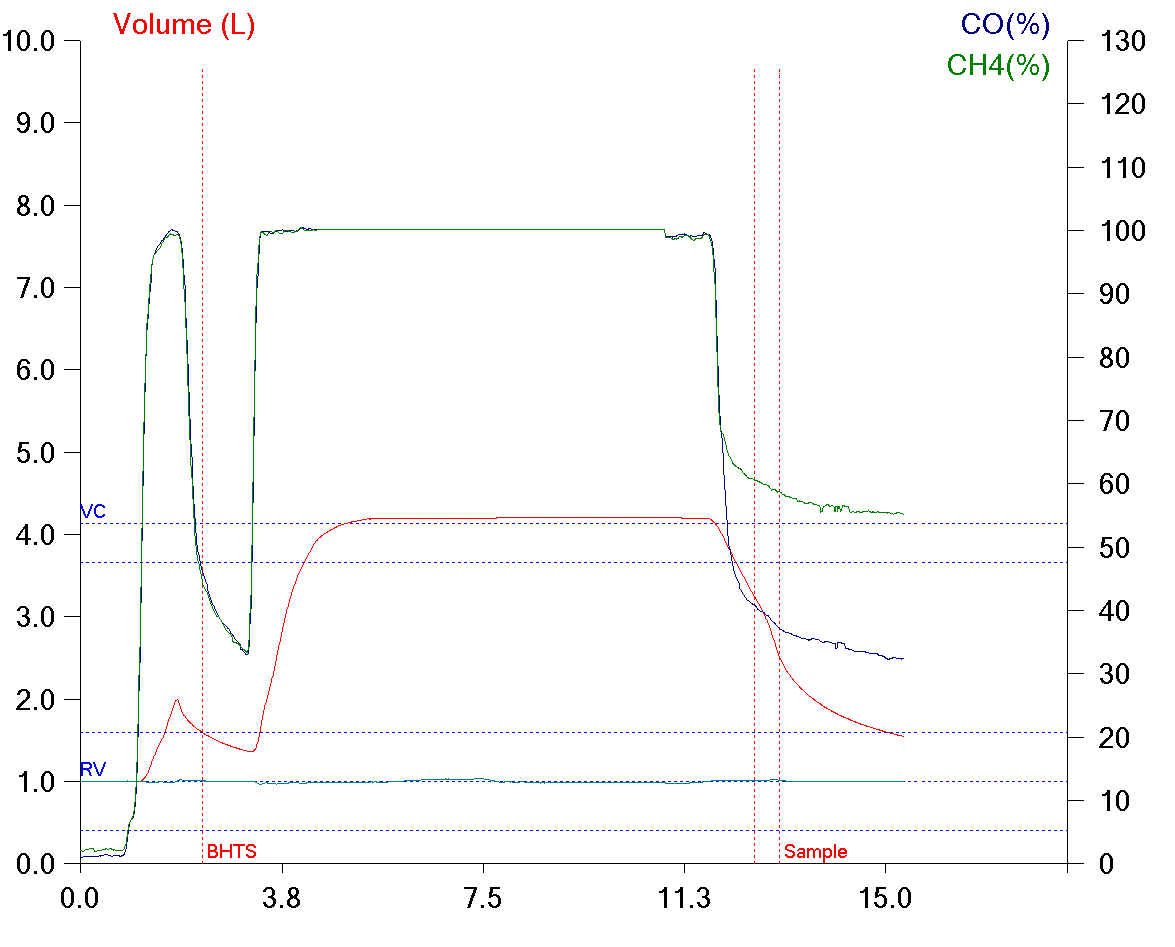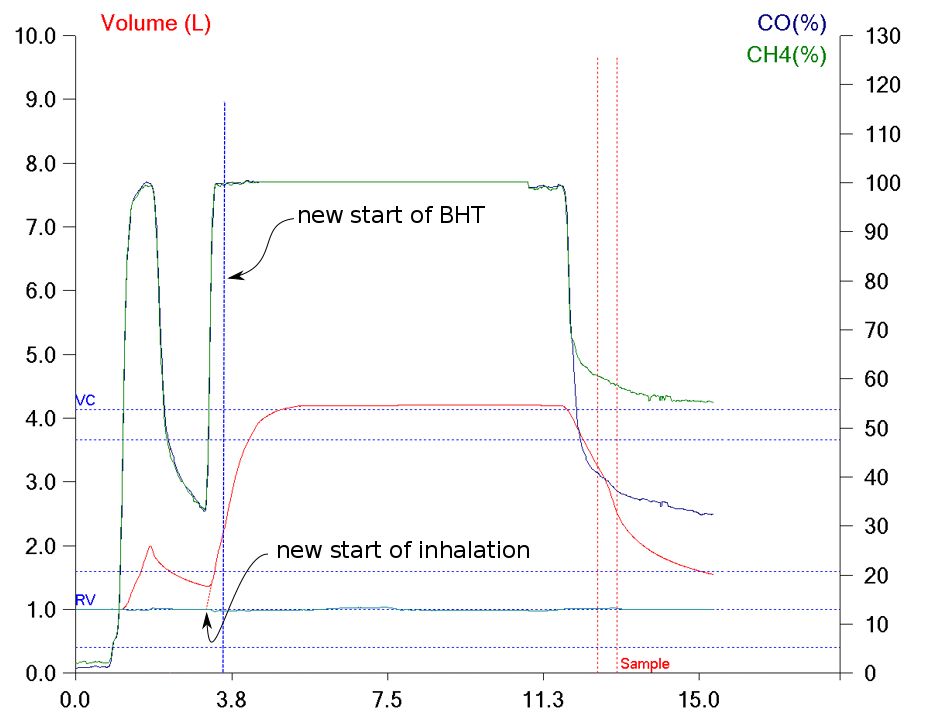This relatively odd DLCO testing error came across my desk today. Although it’s fairly unusual it brings up some interesting points about how the Breath-Holding Time (BHT) is determined and what effect it has on DLCO.
Specifically, at the beginning of the DLCO test the patient took a partial breath in, then exhaled, then took a complete breath in. The patient performed the DLCO test three times and did exactly the same thing each time despite being coached by the technician to only take a single breath in. I’m sure this says something about human nature but I’m not exactly sure what.
Anyway, our test systems uses the Jones-Meade approach to measuring breath-holding time (the ATS/ERS recommendation). The J-M algorithm starts the measurement of BHT when the inhalation has reached 1/3 of the inspiratory time. In this case the computer detected the beginning of the first inspiration and detected when the patient had reached the end of inspiration (which is standardized at the point at which 90% of the final inhaled volume has been reached), but it ignored what happened in the middle. For this reason, the software set the beginning of the breath-holding time before the “real” inhalation.
Although the patient did inhale a small amount of the DLCO test gas at the beginning, they immediately exhaled it so it is hard to count the first inhalation as the real start of the test. If the second inhalation is back-extrapolated, a new start of the BHT can be determined. When this is done, the BHT decreases from 10.52 seconds to 9.25 seconds.
To re-calculate the DLCO:
since only the BHT changed the right-hand side of the equation can be ignored. With the original BHT, the left side of the equation calculates as 0.383. When the new BHT is substituted it calculates as 0.436, an increase of 13.8%. The calculated DLCO then increases from 15.14 ml/min/mmHg (60% of predicted) to 17.22 ml/min/mmHg (68% of predicted). By my lab’s criteria this changes the DLCO from mildly to moderately reduced to just mildly reduced but realistically doesn’t otherwise change the overall interpretation.
When patients perform a single-breath DLCO test they do not instantaneously inhale the test gas mixture nor do they exhale it instantaneously. It takes a certain amount of time to do both. Diffusion actually begins once the inspired gas passes a patient’s anatomical deadspace but does not reach it’s maximum rate until near full inhalation. Although the rate of diffusion decreases during exhalation, it nevertheless continues throughout exhalation, or at least until the alveolar sample is taken. The DLCO calculation however does not take inspiratory time or expiratory time into consideration.
The Jones-Meade algorithm attempts to take what occurs physiologically during inhalation and exhalation into consideration by starting to measure the breath-holding time once 1/3 of the inspiratory time has occurred and ends half-way through the alveolar sampling period. The algorithm assumes that the patient inhales and exhales as quickly as possible. When a prolonged inspiration or expiration occurs it’s possible that the measured BHT will not accurately reflect the period during which diffusion occurred.
Patients don’t usually have a problem with the inhalation phase of the DLCO test (other than not exhaling to RV first or not inhaling to TLC). For whatever reason this patient had a false start every time they started to inhale. This caused the breath-holding time to be overestimated which in turn caused the calculated DLCO to be underestimated. Although in this case it did not really change the overall interpretation the discrepancy in DLCO would become important when results are trended.
References:
Brusasco V, Crapo R, Viegi G. ATS/ERS Task Force: Standardisation of pulmonary function testing. Standardisation of the single-breath determination of carbon monoxide uptake in the lung. Eur Respir J 2005; 26(4): 720-735.

PFT Blog by Richard Johnston is licensed under a Creative Commons Attribution-NonCommercial 4.0 International License


